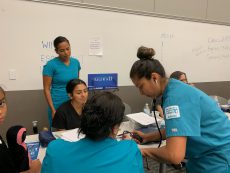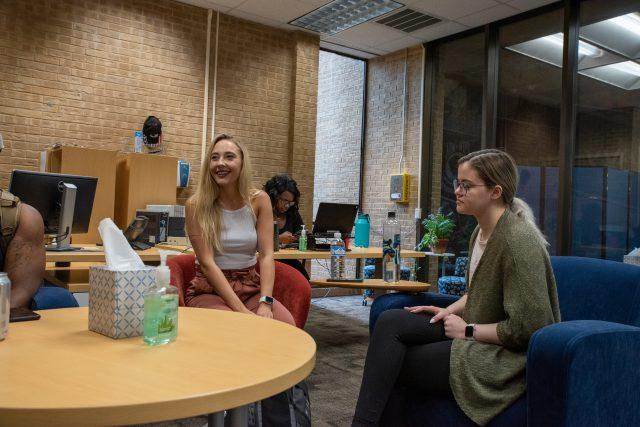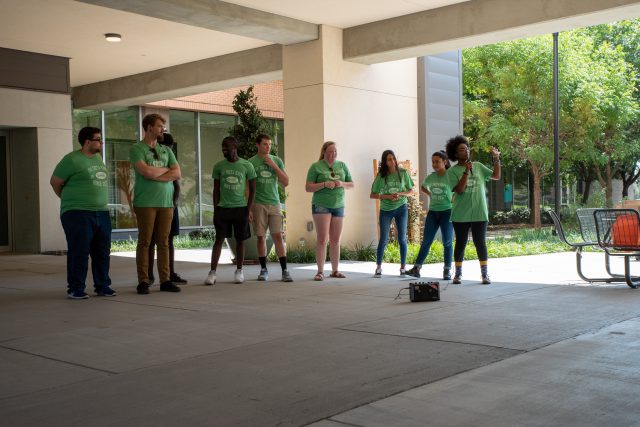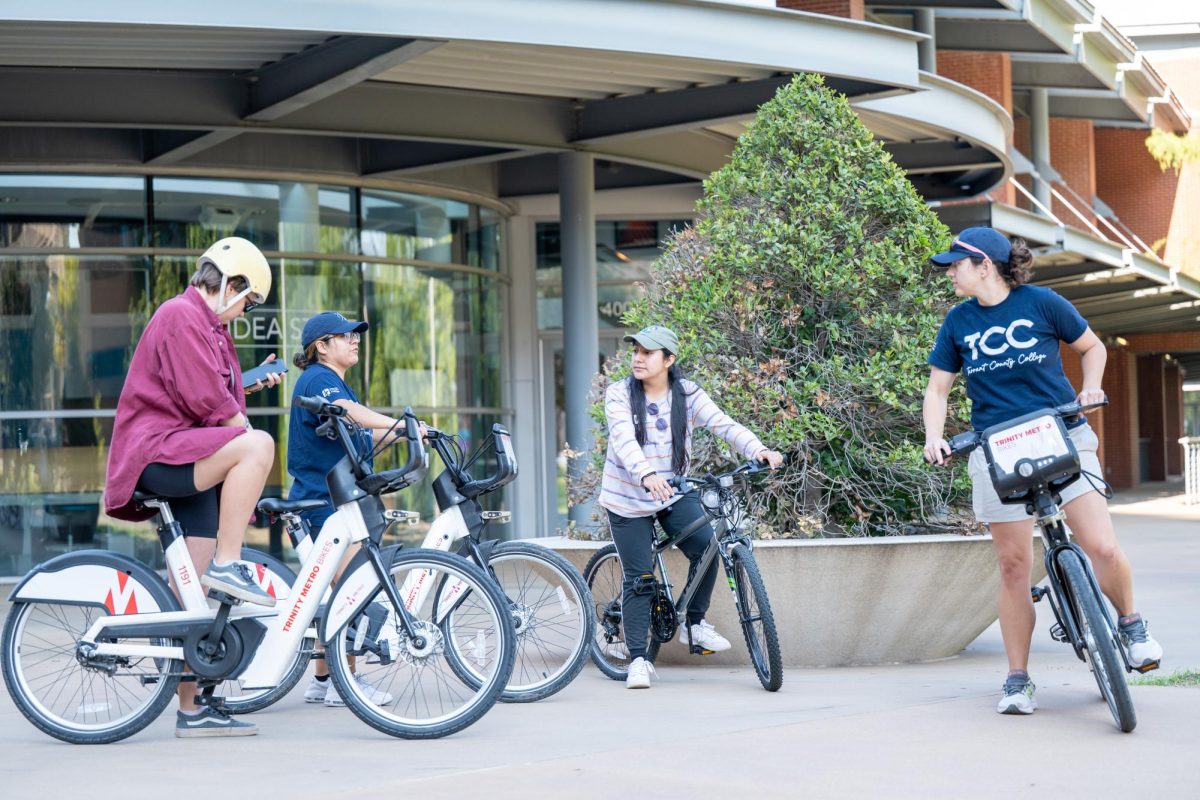| September, 11, 2019 | Juan Ibarra | editor-in-chief |
|---|

Nurses enrolled in the bilingual nursing program attend the North Texas Wellness Fair to get more experience in the nursing field.
A patient sits in the emergency room and speaks with a nurse. However, due to a language barrier, the patient cannot explain to the nurse what exactly is going on. This can lead to high costs for a patient, and fatal mistakes at the worst.
The need for bilingual nurses is growing.
“At least 35, if not 40% of Tarrant County are Hispanic, but only 5.1% are Hispanic nurses,” associate professor of nursing Susan Hamilton said.
Since fall 2018, TR Campus has had the first bilingual nursing program in Texas with the goal to train medical workers in both English and Spanish.
Many Hispanic patients are recent immigrants or older people who never learned English, Hamilton said.
When Hamilton was a professor at a different school, a student in labor and delivery paged Hamilton because there was a woman in labor who required an epidural who was not cooperating. The Spanish-speaking patient was acting very combative, even though she had signed a consent form saying she had understood what they were going to do.
“I introduced myself in Spanish and you could just see the relief on her face,” Hamilton said.
When Hamilton asked the patient what she thinks they were getting ready to do to her, the patient said they were getting ready to put a tube in her back to suck out the baby.

TR bilingual nursing students practice by checking each other’s blood pressure. The nursing program hopes to assist with Spanish-speaking patients in Tarrant County.
“I explained what they were going to do in Spanish, then she became cooperative and delivered the baby,” Hamilton said.
This is just one of many examples that happen every day in hospitals and clinics, Hamilton said.
Hamilton has been told countless stories by her Hispanic students about their relatives going through similar horror stories.
Hamilton mentioned a student who recounted a time when their grandfather went to the hospital, but during his stay he was taken to the ICU for unrelated respiratory problems because the staff didn’t know he had obstructive sleep apnea that required a machine. The problem could have been avoided if there had been no language barrier.
The program helps place nursing students into controlled environments so they can learn to adapt to a multilingual environment.
“Along with the program, we also have volunteer hours that we have to do,” TR bilingual nursing student Alina Hernandez said. “We do a lot with the Spanish-speaking community.”
This program requires that students not only take their normal nursing classes, but also specific bilingual classes. The coursework can make for a stressful final few weeks of the semester, but it is worth it, according to Hernandez.
“It can be a little overwhelming, but I think we reap the rewards,” Hernandez said.
Hernandez is familiar with the clinical setting and she grew up being fluent in Spanish, and even she says that the program is helpful to learn words that aren’t used in everyday conversation.

The TR bilingual nursing program is the first in Texas, and has students learning both English and Spanish to help the needs of the Hispanic community.
“A lot of words I knew because of my previous experience,” Hernandez said. “But I remember times when I was at a hospital or at the clinic and I would have to ask my other colleagues who spoke Spanish how to pronounce a certain word or organ because I had no idea.”
The program requires a collaborative effort from the community to recognize the changes in the industry and find ways to meet the workforce need, vice president of the board of trustees Teresa Ayala said.
“Although the bilingual program is in its infancy, its success depends on the overall commitment of many,” Ayala said.
At the end of its first year, there have been improvements and the program is still growing.
“It’s a good program and it is still in the starting phase,” Hernandez said, “We’re clearing out a lot of the bumps in the road and communication between the students and the faculty has gotten a lot better.”


































